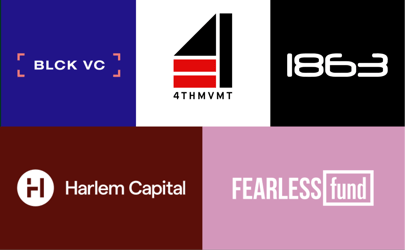The crazy growth era we saw in 2021 into 2022 flooded the market with many good, and unfortunately, many… challenged companies.
Several company “types” have emerged as the dust finally begins to settle. Some have product-market fit, accelerated by being a product of being born during the “ZIRP” environment, while unviable growth-stage companies are fizzling out. At the same time, other promising companies are planning for the IPO market to open up and reset the cycle for a healthy environment. Meanwhile, early-stage companies are returning to zero, resetting talent back into the ecosystem. All this while AI-backed businesses are finding their moment in the sun.
Long story short, the talent market is as disjointed as I’ve ever seen it.
It’s a maze of a marketplace plagued with messy cap tables, insurmountable preference stacks, bloated valuations, and top talent exhibiting hesitation in a way we haven’t seen before. The reason has a lot more to do with than just COVID fatigue or talent’s desire for stability. It’s also not a lack of interest or a matter of there being too few companies to choose from either.
It’s the opposite. There’s just a lot going on in the market, making it hard for everyone to discern the next right thing.
How to assess the viable vs. volatile opportunities
I found it helpful to spell out the company types we’re seeing. Hopefully, this list helps you either self-identify, classify, or assess a company you’re involved with. For all of the above, we’re here to help build out a playbook on how it’s still possible “to win” in these different scenarios.
Here’s a quick hit on the types of businesses we’re seeing in the market.
1. The “Hail Mary” growth-stage company
These businesses are in an existential crisis. They raised substantial capital during the COVID-fueled growth surge but are burning through it fast.
The problem stems from record-breaking venture dollars being poured into the system—$621 billion in 2021 alone alongside 5.4 million new businesses that emerged the same year. This tremendous growth led to way too much spending and unsustainable foundations.
Many companies born in this period failed to achieve true product-market fit. They rode the tailwinds of customers having flush balance sheets and were more willing to buy or “experiment” at a faster rate. As we approach mid-2024, these companies that raised substantial capital in ‘21-‘22 find themselves struggling to regain market traction, can’t get their cost structure under control, are unable to come close to their previous valuations or raise any more funding, and risk running out of capital by the end of the year.
2. The “zombie” growth-stage company. Alive… but barely.
A step above “endangered species” companies, the “zombie” growth-stage company:
- Is cash flow neutral and likely profitable, but will never grow to a fraction of their valuation (because it’s way overvalued) and growth has slowed down.
- Have too big and unwieldy of a preference stack.
- Raised too much (and burn too much) capital.
- Have experienced their teams being cut “to the bone”.
Zombie growth-stage companies are in limbo. Half dead, half alive. Trudging along until they find their next growth opportunity.
3. The “TBD” early-stage company
These are your pre-seed and series A companies that are still trying to find their footing and product-market fit. Cautiously small with anywhere from 5 to 40 people, they’ve raised 1 to 10 million, but are struggling with their capital to a point where they’re still figuring out how to accelerate just right.
When it comes to talent, we’re seeing only a small subset of the market that would consider joining a company that might just be a bit too early in its life.
4. AI… Enough said
There’s high conviction that AI is here to stay, but a lot remains to be seen on exactly who, how, and what will win. Is it larger tech companies with “troves” of first-party data? Standalone platforms playing in different segments? Or could it just be hype that never comes to fruition?
The verdict is still out… Most agree that companies without an AI strategy will be obsolete in some form or fashion. It begs the question: How many AI platforms do we really need? Will only a few AI companies come out on top, or is there a world where we’ll need niche AI solutions for all types of use cases? I don’t know the answer yet, so I plan to ask ChatGPT.
5. The “Maverick” growth-stage company
These are high-octane growth-stage companies that are continuing to scale, even if they’re burning through some capital in the process. These companies:
- Raised significant capital at a strong valuation and have the potential to either grow into or grow past it.
- Dialed in on how to drive demand in this ecosystem.
- Established themselves as a must-have service or product for their customers.
These high flyers have plenty of cash, solid fundamental economics to back them, approaching and/or have reached profitability, and attracting good talent along the way.
6. The “smooth operator” pre-IPO company
These companies have nailed operational efficiency. They don’t roll the dice too often, but when they do, they hit. They’ve used this past growth period to upgrade talent without going crazy on headcount. They’re mature, profitable, have a healthy balance sheet, and biding their time to go IPO when the timing’s just right.
We’ve been a swath of these companies lately stealthily upgrading talent as they work toward their moment.
7. The “pro” post-IPO company
Finally, there’s the “pro” post-IPO company. While they’re still measured on growth and profitability, they’re flushed with cash, driving growth, and leaning into making investments on talent, tech, etc. to further solidify their position.
Here’s what I would do in a bid for top talent in this crazy market
The playing field is extremely messy right now…
- Valuations are too high and candidates don’t believe they can drive outcomes for themselves due to bloated valuations. At the same time, they’re much pickier on culture, team, economic opportunity, product, etc.
- Early-stage companies are safer for value creation but higher risk overall.
- Many are also looking at the IPO markets to see how tech performs and holding their breaths to see if growth comes back.
People are cautious. More risk-averse than usual coming out of the last few years. But there’s still a real opportunity to make the most out of this maze and win down the line.
- If you’re in PE, or a large company, start looking for innovative talent now to capitalize on this “slower” market.
- If you’re in a clean VC-backed company, take advantage of your position and court the absolute cream of the crop.
- If you're in a complex VC-backed company, think outside the box on management carve-outs, outsized offers, and get creative on strategies that move the ball downfield.
I think we’re about 9–12 months away from tech talent finding its way back to being top tier.
Wherever you are, act now.
Sign up for my newsletter, Talent Market Fit to get my latest thoughts on the market





